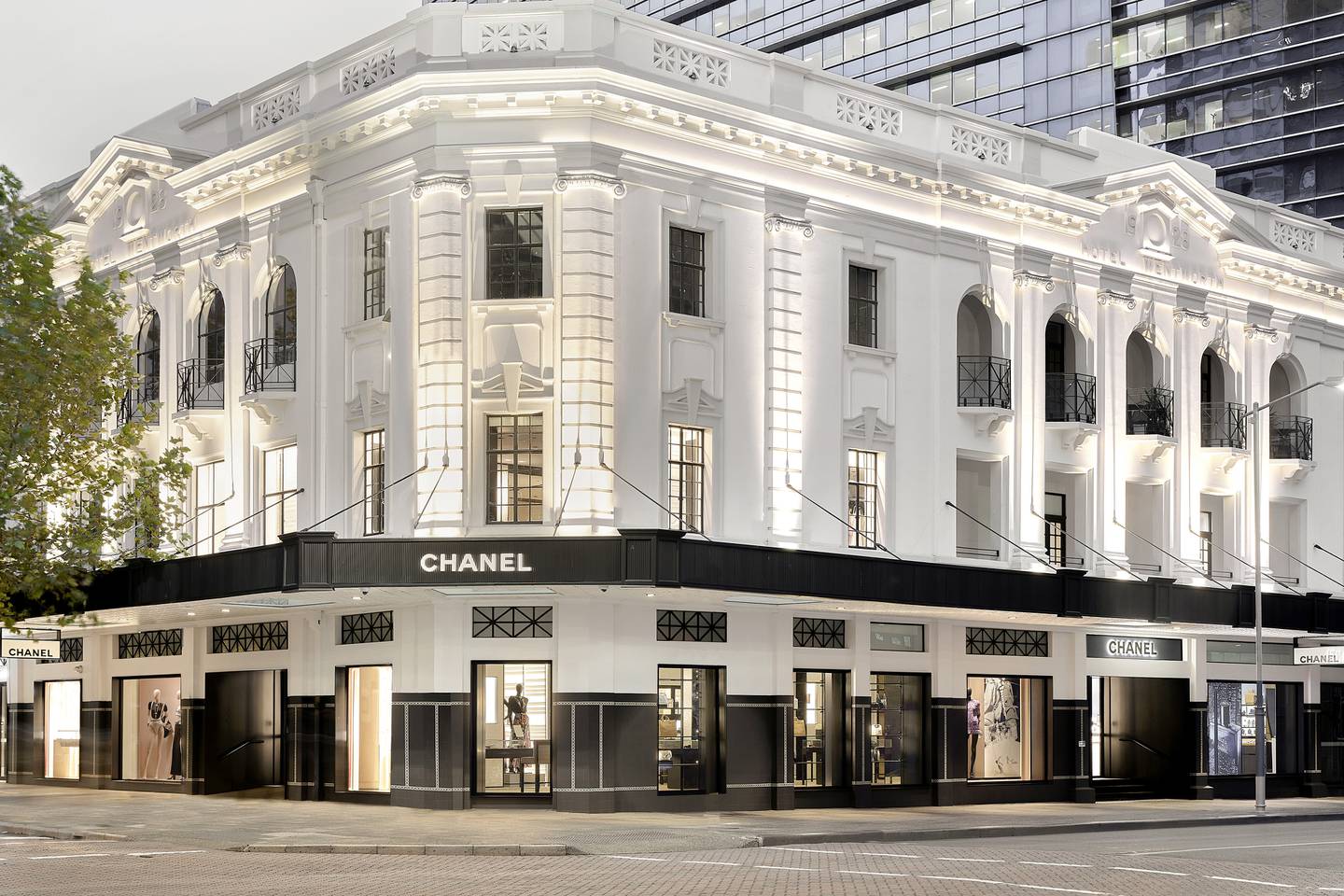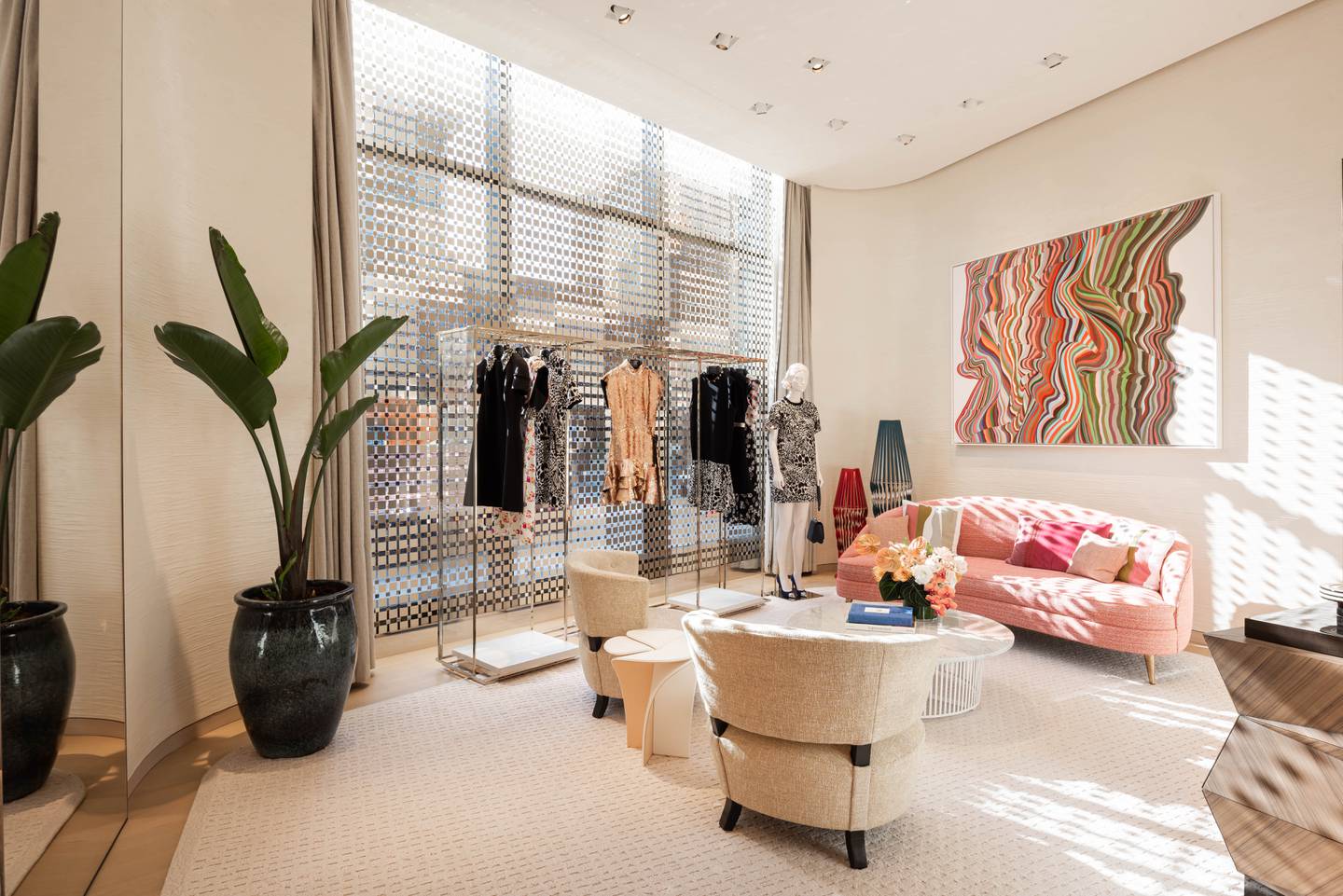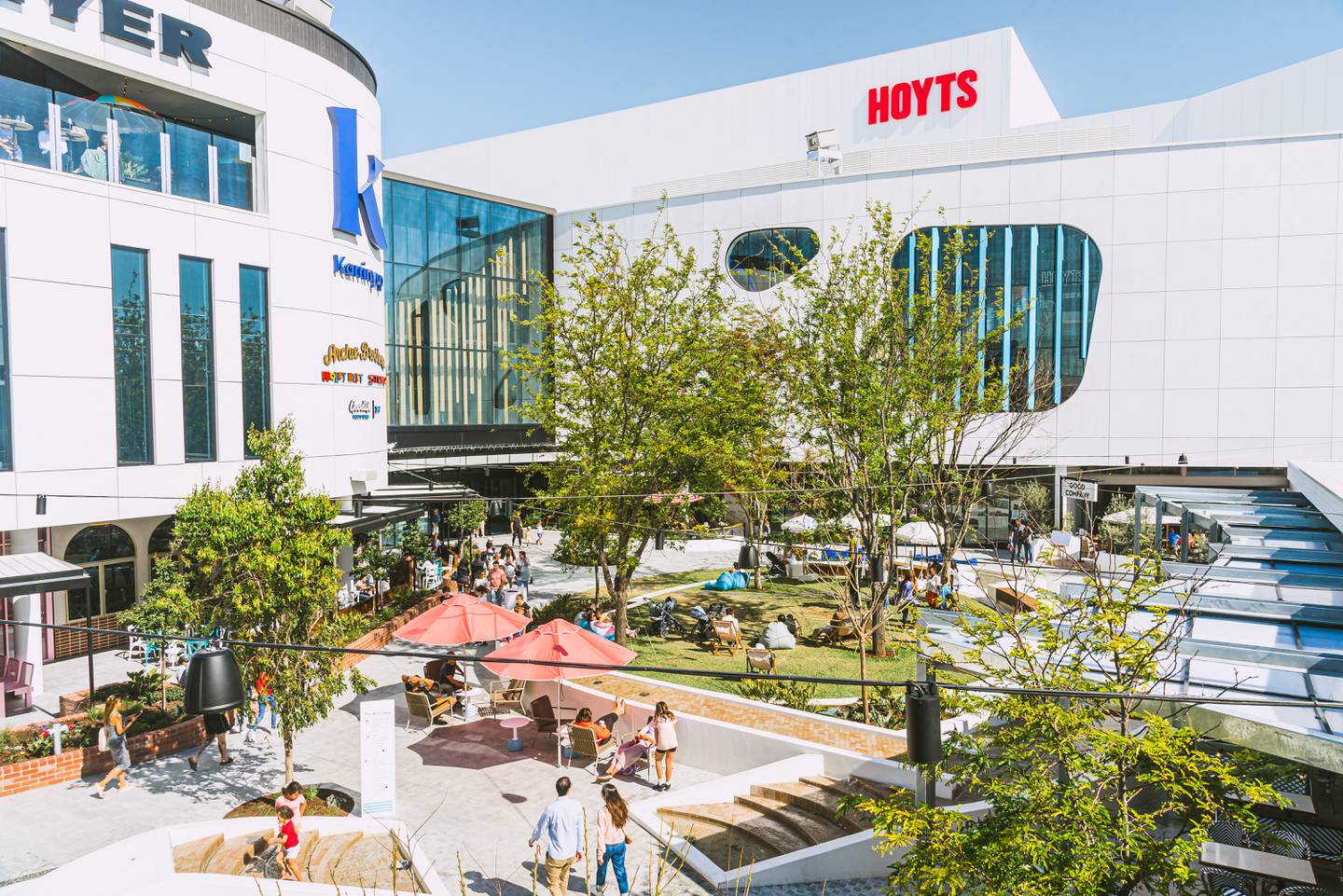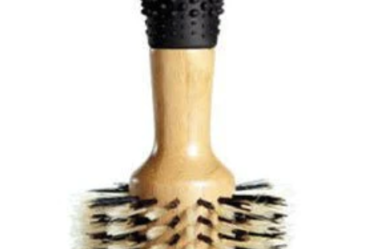
Fluorescent colours may come in and out of fashion, but they are always on high rotation in the capital of Western Australia. “If you go into Perth airport, it’s wall-to-wall hi-vis vests,” said retail consultant Alicia Kemp, referring to the uniforms needed for the industry responsible for much of the city’s wealth, which is proving a lure for luxury fashion and jewellery brands.
Mining “drives the whole market,” said Jim Tsagalis, managing director of Lease Equity, a commercial leasing company that looks after some 80 percent of property transactions in Perth’s central business district (CBD). “It’s fair to say we’re the ‘Houston of the Southern Hemisphere’. We’re very heavily skewed to oil, gas and mining, but that also means our economy rides that as well.”
The state of Western Australia is major player in the global petroleum and mining industries, exporting everything from liquefied natural gas (LNG) and gold to iron ore and rare earth minerals. Where once the mining sector went through a boom-or-bust cycle, its recent consistency has seen a renewed confidence in the Perth market, with more luxury brand debuts and the expansion of existing ones in the city centre, something Tsagalis expects to continue.
Christian Dior will reportedly open a two-storey flagship in the fourth quarter of this year, while Fendi and Cartier are said to be in the next wave of openings.
Previously, the handful of luxury boutiques that had opened in Perth were based along King Street, a beautiful, if small, street lined with heritage buildings. In the past five years, these luxury stores, including Chanel, Louis Vuitton and Tiffany & Co, have moved around the corner to the Raine Square development near the Murray Street Mall.
All have moved into larger premises, a trend that Tsagalis says is happening across the city centre. Gucci will be the last major global luxury house to make the move into its new home, slated for a mid-year opening.
But apart from the obvious, what’s driving all this dynamism in the city’s luxury market?
‘The most remote city in the world’
For those who have never visited Perth — the city proper is named Boorloo in the language of its Indigenous Noongar people — it remains an enigma and can require some unpacking.
“It’s the most remote city in the world,” said Tsagalis, a claim most locals hold with pride even if it is a widely contested one. The direct air distance from Perth to Sydney, on the east coast, is 3290 km — just shy of that from London to Damascus. It is quicker for locals to fly to the Indonesian resort island of Bali, a popular weekend break destination, than Sydney.
A recent report by city officials estimates that Greater Perth will grow from just over 2 million people today to 2.9 million by 2031 and it asserts that the city will become the third largest in the country after Sydney and Melbourne, overtaking Brisbane, by 2050.
It’s not just the population that’s growing. Western Australia (WA), the state where Perth is located, leads the country’s eight states and territories on overall annual growth when assessed across eight economic indicators including retail spending and employment growth, according to a CommSec report.
From a lifestyle perspective, it’s an environment that’s hard to beat for those who like long, hot summers, open spaces, endless beaches and a food scene that taps into the diverse cultural backgrounds of its inhabitants. The local lifestyle means that the fashion favoured by some of the city’s residents skews decidedly casual.
“It’s a pretty laidback lifestyle,” said Kylie Radford, founder of Perth-based womenswear label Morrison. “Because it’s so coastal, you can go from the beach to the shopping centres in your bathers [swimsuit] with a sarong and no-one looks sideways.”
But don’t be fooled: ‘stealth wealth’ style also drives wardrobe choices in the city’s affluent suburbs where prestige and luxury products are also on display.
“There’s definitely an understated wealth dressing,” said Tanya Tindall, general manager of Kailis Jewellery, a WA-based company specialising in pearl fine jewellery. “I can walk through Claremont particularly and [see that an outfit is] not as casual as you think it is. It’s not obvious, but if you know, you know.”
That said, “there’s definitely a pocket of overt wealth [too],” she added.
Higher up on the priority list
Perth has traditionally been stuck in fourth place in terms of gateway cities into Australia. This also rang true from a retail perspective, for international brands keen to open in Australia and for those looking to expand.
Tsagalis and Kemp agreed that for most brands, both local and international, the logical order of store openings is either Sydney or Melbourne, then the other, then Brisbane or another city in Queensland in third place. This makes logistics down the east coast of the country fairly simple.

But that is changing, especially at the luxury end of the market.
Jeweller Van Cleef and Arpels opened its first store in the city in December. It already has stores in Sydney and Melbourne. Instead of opening in Brisbane next, Hugues de Pins, managing director Asia-Pacific for the brand, suggested that it made more sense to open in Perth.
“Australia is such a vast continent and for those who live in Western Australia, our current boutique system may not be easily accessible,” said de Pins, adding that the brand expects the new Perth boutique to service “both tourists and locals alike.”
One industry insider, who wished to remain anonymous, said that contrary to popular belief, the Perth luxury market is mostly driven by local customers, not the Asian tourism market which was initially the backbone of the sector.
“Perth has grown up a bit [and] there is so much local wealth in WA [that] tourism is not the big driver anymore,” he said.
Shelter from economic storms
Since that wealth also renders the state less susceptible to economic ebbs and flows, it is appealing to luxury retailers expanding in the Australian market.
“I do feel that we are quite sheltered from the fluctuations,” said Radford, whose label Morrison was founded in 2002 and has nine stores in six states around Australia. “Mining has a lot to do with that.”
“There is a lot of money here and — like anywhere in Australia also people struggling — but if I look at a national level WA is somewhat protected. [Business] feels more consistent for us,” she added.
It’s a sentiment echoed by many.
“There’s definitely a bubble not impacted by any cost-of-living [crisis] issues,” said Tindall. “The aspirational customer is the one who is still struggling. One who’s aspiring to that entry-level $1,000 silver piece is a harder sale than for somebody who wants to buy that $5,000 to $10,000 necklace.”
Nowhere is this bubble more evident than in the city’s western suburbs, which locals refer to as the Golden Triangle. This affluent pocket includes riverside and beachside suburbs such as Peppermint Grove and Cottesloe, and the nearby shopping hub of Claremont. It is also home to the country’s two wealthiest billionaires: mining magnates Gina Rinehart and Andrew “Twiggy” Forrest.
As a shopping destination, Claremont is heavy on Australian designer brands, a segment that Tsagalis points out is missing from Perth’s city centre. Brands such as Camilla, Scanlan Theodore, Camilla and Marc and Zimmermann have invested heavily in the area, creating retail destinations the equal of — or better than — their counterparts in Sydney or Melbourne. The Claremont Quarter shopping centre includes a number of these, along with national department store David Jones, specialist beauty stores such as Mecca, while nearby are luxury multi-brand boutiques Cult Status, Dilettante and Adam Heath.
Mother-daughter duo Judy and Angela Burbury of Adam Heath indicated that the only time they experienced a slowdown in sales last year was in July, when “all of Perth — and not just the western suburbs — was in Europe,” said the former.
Bridget Veals, general manager of womenswear and accessories for David Jones, says that “WA is definitely a strong focus for us… [and] Claremont is the jewel in the crown, definitely for fashion.”
The next big growth spurt
“I think Perth’s due for a step change in about late 2025 or early ‘26, the likes of which we haven’t seen since [department store] Myer came into the central business district 30 years ago,” said Tsagalis, adding that that while the CBD has historically run north-south, it’s now growing from east to west.
The two areas of development are Elizabeth Quay at the western side of the city, which houses a number of office buildings, luxury residences and hotels, and the Perth City Link development to the east, which will include Edith Cowan University’s new City campus, set to be completed at the end of 2025.
Between the two areas, Tsagalis estimates some 50,000 additional people will be living, working, studying and coming into the city on any given day.

“That will bring a real change to the ground-floor vibrancy [for retailers including fashion and luxury players],” he said, adding that the hotel landscape has also undergone massive change in recent years, with many of the world’s biggest names including Como, Westin, Ritz-Carlton and QT now present in the city. “Our increase in inventory is enormous. And it’s at the luxe level, the indulgence level.”
Beyond the CBD and Claremont, the fashion retail focus is generally on heritage suburban shopping centres and the occasional destination address, such as Elle boutique, which stands alone in the Golden Triangle suburb of Nedlands.
The most significant development within that context is the revamping of Karrinyup Shopping Centre, in the suburb of the same name.
Karrinyup was reopened in 2021, after an $800-million upgrade which doubled its size to 109,000 square metres and made it one of the most important destinations for fashion in the city. Of its 300 stores, over half are fashion and beauty retailers of all types from mass market to prestige. It also introduced five international retailers to the state for the first time, including Michael Kors, Sephora and Under Armour.
Operational challenges and opportunities
For retailers, Perth also presents a handful of challenging issues. Its isolation and distance from other Australian capital cities need to be factored in for logistics, said Tsagalis.
Staffing can also be a problem when looking from a national perspective. As Kemp pointed out, “To have an area manager, you’d want four or five stores,” she said. “That’s never going to happen in Perth. That becomes difficult. How do you motivate staff? It’s hard to manage, and difficult to hire, fire and motivate staff. Australian brands that are only in Australia find it quite a difficult place to retail out of.”
Tindall acknowledges that customer service is often better in Sydney and Melbourne, where she believes retail is considered more of a career but hopes that the arrival of the latest wave of luxury brands will “elevate the service” of existing brands in Perth across all levels.
Tsagalis believes that a tight CBD real estate market at the luxury level is an issue for future growth, while several sources noted that there are still some social issues such as homelessness in certain pockets of the CBD that can cloud its appeal.
But one growing advantage for Perth is in its newfound status as a travel hub. While its proximity to Southeast Asia has always been a boon, its west coast location means it is also the only Australian city with direct flights to Europe.
Qantas has run London direct flights for several years, with the UK being the largest single group of tourists arriving in WA. In 2022 it launched seasonal direct flights between Perth and Rome, the first direct flight between Australia and continental Europe. And in July, it is set to launch seasonal Paris-Perth direct flights.
“That gateway proposition is going to make a massive difference [to the state’s economy and retail landscape],” said Tsagalis.
If the tyranny of distance once worked against Perth from a national perspective, this international shift in perspective could finally work to the city’s advantage.
“In the past it was a little bit of a ‘them-and-us’ [mentality with the eastern states],” said Burbury. “[But] I don’t think… West Australians think they’ve been left behind anymore. We can paddle our own canoe now.”



